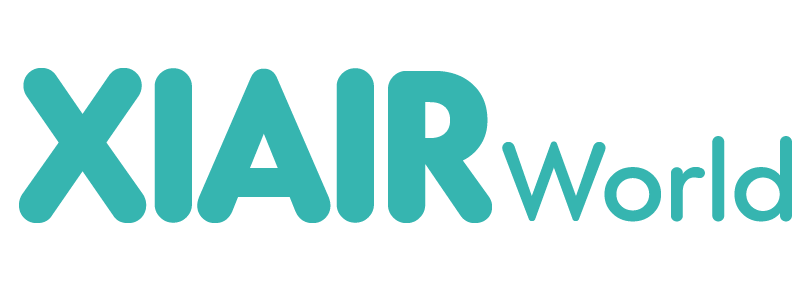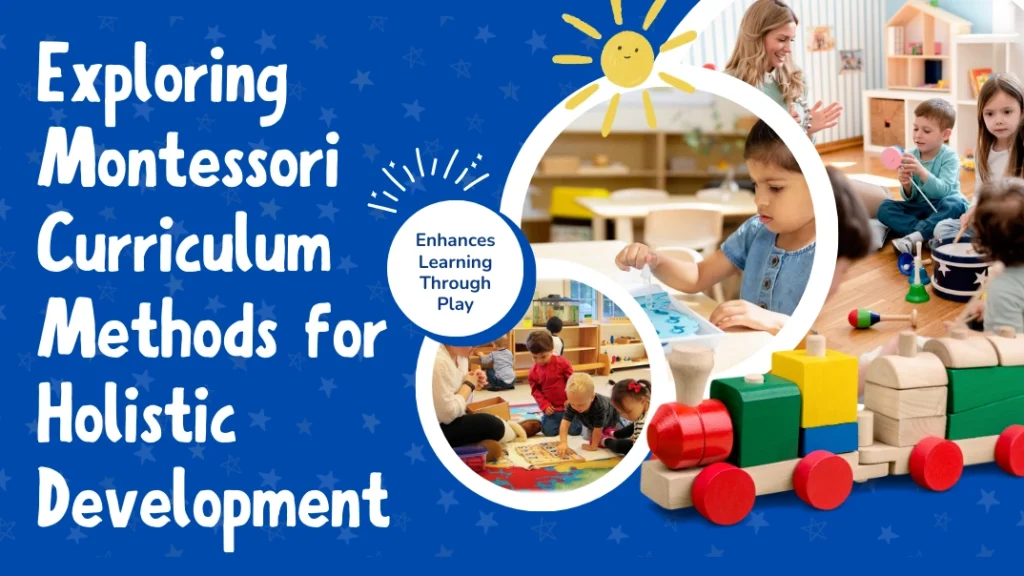What Is the Montessori Curriculum?
The Montessori curriculum is a child-centered educational approach to foster independence, creativity, and a lifelong love of learning. Dr. Maria Montessori developed it based on scientific observations of children and their natural developmental stages.
Overview of the Montessori Curriculum and Its Purpose
The Montessori curriculum is structured to provide hands-on, experiential learning through specialized materials. Whether implemented in a Montessori school curriculum, a Montessori homeschool curriculum, or a Montessori at-home curriculum, its purpose is to encourage children to explore, discover, and master skills at their own pace.
How It Differs from Traditional Educational Approaches
Unlike traditional education, which often relies on teacher-led instruction, the Montessori education curriculum empowers children to choose activities that resonate with their interests. For instance:
- The Montessori preschool curriculum emphasizes self-directed exploration, while traditional preschool focuses on fixed schedules.
- The Montessori math curriculum introduces concepts through tactile tools like bead chains, making abstract ideas concrete.
| Comparison of Montessori and Traditional Curricula | Montessori Curriculum | Traditional Curriculum |
|---|---|---|
| Child-driven exploration | Activities chosen by the child | Teacher-driven, uniform tasks |
| Flexible learning pace | Customized progress for each student | Fixed timelines |
| Hands-on learning with specialized materials | Materials like the Pink Tower and Sandpaper Letters | Primarily textbooks and worksheets |
The Montessori curriculum for preschool, elementary, and even middle school adapts to different age groups, ensuring it meets the evolving needs of children.
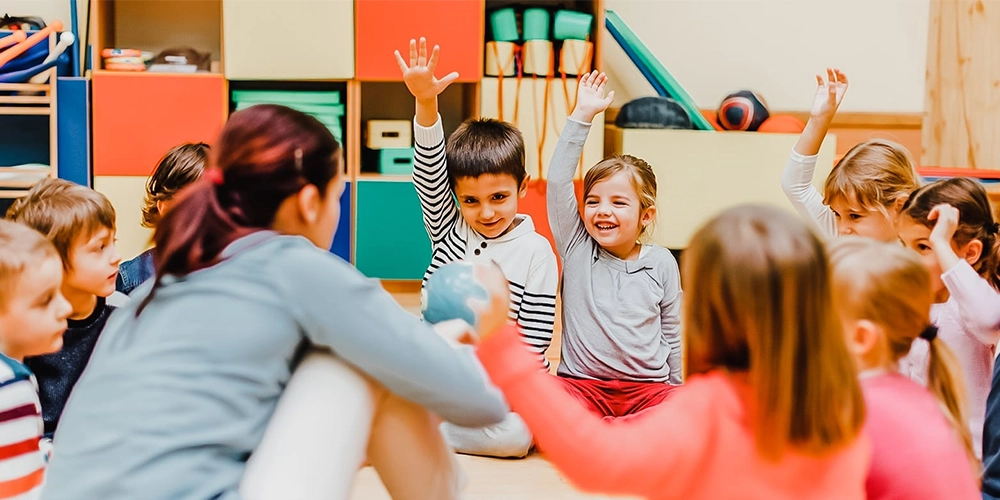
Core Values and Goals of the Montessori Curriculum
The Montessori curriculum is rooted in values that promote independence, respect, and holistic growth. Its design reflects the belief that children are naturally curious and capable of remarkable achievements when given the right environment.
Fostering Independence and Self-Directed Learning
Children using the Montessori kindergarten curriculum learn practical life skills such as dressing, cleaning, and cooking. These activities, integral to the Montessori practical life curriculum, empower them to become self-reliant and confident.
The Emphasis on Intrinsic Motivation and Curiosity
The Montessori curriculum preschool and beyond eliminates traditional rewards and punishments, fostering a love for learning. For instance:
- The Montessori reading curriculum integrates phonics and storytelling, igniting curiosity in language.
- The Montessori mathematics curriculum introduces counting and operations through tools like golden beads.
Holistic Development: Social, Emotional, and Cognitive Growth
The Montessori cultural curriculum integrates subjects like geography, history, and art to build empathy and global awareness. Children learn to appreciate diverse perspectives while developing cognitive and emotional intelligence.
Encouraging Responsibility and Care for the Community and Environment
Programs like the Montessori peace education curriculum and lessons in sustainability are key to teaching responsibility. The Montessori botany curriculum and Montessori geography curriculum further nurture respect for the environment.
History and Evolution of the Montessori Curriculum
The Montessori curriculum has a rich history rooted in Dr. Maria Montessori’s vision of child-centered education.
Maria Montessori’s Vision and the Origins of the Curriculum
In 1907, Dr. Montessori opened Casa dei Bambini, where she observed that children thrived in an environment of freedom within structure. This led to the creation of the Montessori curriculum philosophy, which balances exploration and discipline.
Key Milestones in the Global Development of the Montessori Curriculum
- 1909: The first teacher training course introduced the Montessori curriculum method globally.
- 1929: The establishment of the Association Montessori Internationale (AMI) to preserve the authenticity of the curriculum.
- Today: The curriculum has expanded to include variations like the Montessori elementary curriculum, Montessori middle school curriculum, and even Montessori high school curriculum.
Modern Adaptations of Montessori Principles
The Montessori curriculum 3-6, for instance, adapts to early childhood needs, while the Montessori 6-9 curriculum focuses on abstract thinking and collaboration. Parents can implement the method at home with tools like Montessori curriculum books.
The Five Key Areas of the Montessori Curriculum
The Montessori curriculum is categorized into five fundamental areas, each addressing a specific aspect of child development.
1. Practical Life in the Montessori Curriculum
- Activities: Tasks like sweeping, pouring, and tying shoelaces enhance fine motor skills.
- Connection to Independence: These exercises are at the core of the Montessori practical life curriculum and foster confidence and self-sufficiency.
2. Montessori Sensorial Curriculum
- Development of Observation Skills: The Montessori sensorial curriculum teaches children to categorize shapes, colors, and textures.
- Examples of Tools: Materials such as the Pink Tower and Knobbed Cylinders are used to sharpen sensory perception.
3. Montessori Mathematics Curriculum
- Using Tools to Teach Concepts: The Montessori mathematics curriculum includes bead chains and number rods for learning operations.
- Gradual Progression: It moves from concrete counting to abstract problem-solving.
4. Montessori Language Curriculum
- Focus Areas: Phonics and vocabulary development are emphasized in the Montessori phonics curriculum.
- Key Tools: The Moveable Alphabet and Sandpaper Letters support early literacy.
5. Cultural Education in the Montessori Curriculum
- Subjects Covered: Geography, science, and history are core to the Montessori cultural curriculum.
- Cosmic Education: This unique concept introduces children to the interconnectedness of life and the universe.
How Does the Montessori Curriculum Work?
The Montessori curriculum is implemented through thoughtfully prepared environments, self-paced learning, and teacher observation.
The Role of Prepared Environments in Supporting Learning
Each classroom is equipped with materials suited to specific age groups. For instance:
- The Montessori infant curriculum emphasizes sensory development.
- The Montessori daycare curriculum focuses on foundational life skills.
How Students Progress at Their Own Pace Within the Curriculum Structure
The flexibility of the Montessori curriculum by age allows children to revisit concepts as needed, building mastery without pressure.
Importance of Observation and Guidance by the Teacher
Teachers in the Montessori curriculum serve as facilitators rather than traditional instructors. They carefully observe students, stepping in only to provide guidance or introduce new materials.
Don’t just dream it, design it! Let’s chat about your custom furniture needs!
The Role of Montessori Materials in the Curriculum
Carefully designed materials are at the heart of every Montessori education curriculum, offering children a tactile and visual way to explore abstract concepts. These materials are not just tools but integral components of the learning process, fostering independence, problem-solving, and critical thinking.
Iconic Montessori Materials Like the Pink Tower and Sandpaper Letters
Many parents and educators recognize the Pink Tower and Sandpaper Letters as symbols of the Montessori sensorial curriculum and language curriculum, respectively. The Pink Tower enhances a child’s understanding of size, order, and coordination, while Sandpaper Letters introduces phonetic awareness by combining touch and sound.
| Material | Purpose | Linked Curriculum Area |
|---|---|---|
| Pink Tower | Develops spatial awareness and precision | Montessori Sensorial Curriculum |
| Sandpaper Letters | Builds letter recognition and phonetic understanding | Montessori Reading Curriculum |
| Golden Beads | Provides a hands-on introduction to arithmetic and number concepts | Montessori Mathematics Curriculum |
| Moveable Alphabet | Encourages word-building and creative writing | Montessori Language Curriculum |
How Self-Correcting Materials Support Independent Learning
The self-correcting nature of Montessori curriculum materials allows children to evaluate their work independently. For example, using Knobbed Cylinders, a child can identify and correct mismatches without adult intervention, building problem-solving skills and confidence.
Integration Across Different Areas of Learning
Montessori materials are versatile and interconnected, making them applicable across multiple domains. For instance:
- Bead chains, used in the Montessori math curriculum, also support pattern recognition in sensory learning.
- Geometric Solids aid understanding of three-dimensional shapes in geometry and tactile exploration.
These materials are foundational to the Montessori homeschool curriculum. and classroom environments, adapting seamlessly to both settings.
Montessori Curriculum and the Learning Environment
Creating the right learning environment is one of the most essential aspects of the Montessori curriculum. The carefully designed settings give children the tools, materials, and freedom to explore and develop independently. Each developmental stage is catered to with specific activities and focuses, ensuring children grow academically, socially, and emotionally.
Montessori Curriculum for Toddlers (0-3 Years)
For toddlers, the focus is on sensory experiences and the development of motor skills. This period is marked by rapid growth, where children use their senses and physical movements to explore and understand the world around them.
Sensory Experiences and Early Motor Skills Development
- Toddlers engage in activities like sorting objects by size, stacking blocks, and transferring items with spoons to develop coordination and concentration.
- Materials such as Knobbed Cylinders and Color Tablets, core components of the Montessori sensorial curriculum, enhance tactile and visual perception.
Nurturing Language Acquisition Through Interaction and Exploration
- Tools like picture cards, flashcards, and simple books support early language development. Singing songs and nursery rhymes help improve vocabulary and phonetic awareness.
- Verbal interaction during activities such as storytelling fosters comprehension and expression, foundational to the Montessori language curriculum.
| Activity | Skill Developed | Linked Curriculum Area |
|---|---|---|
| Matching Textures | Sensory discrimination | Montessori Sensorial Curriculum |
| Transferring Objects with a Spoon | Fine motor skills and concentration | Montessori Practical Life Curriculum |
| Singing Nursery Rhymes | Language acquisition and auditory memory | Montessori Language Curriculum |
These activities align with the Montessori early childhood curriculum, ensuring toddlers develop essential skills in an engaging and supportive environment. in the Montessori preschool curriculum and beyond.
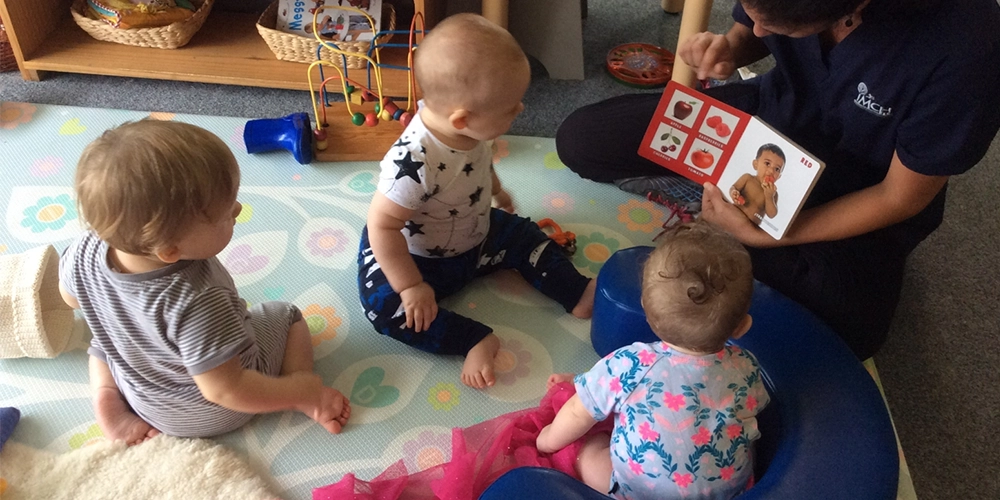
Montessori Preschool Curriculum (3-6 Years)
Children refine their motor skills at preschool while engaging in more structured academic activities. The Montessori preschool curriculum integrates practical life, math, and language to build independence and academic readiness.
Emphasis on Foundational Skills in Practical Life, Math, and Language
- Practical life activities, such as folding clothes and cleaning tables, teach responsibility and foster independence.
- The Montessori math curriculum introduces counting and arithmetic through hands-on tools like Bead Chains and Number Rods.
- Language development is advanced through tracing sandpaper letters and building words with a Moveable Alphabet, key elements of the Montessori phonics curriculum.
Activities That Promote Focus, Coordination, and Independence
- Sensory tools like the Pink Tower and Sound Cylinders enhance focus and spatial awareness.
- Repetitive tasks allow children to build self-discipline and patience, critical to mastering practical and academic skills.
| Activity | Skill Developed | Associated Curriculum Area |
|---|---|---|
| Cleaning Tables | Responsibility and motor coordination | Montessori Practical Life Curriculum |
| Counting with Number Rods | Early math skills and numeracy | Montessori Mathematics Curriculum |
| Tracing Sandpaper Letters | Pre-writing and phonetic awareness | Montessori Language Curriculum |
These carefully designed activities ensure that children in this stage excel academically and socially, preparing them for the Montessori elementary curriculum.
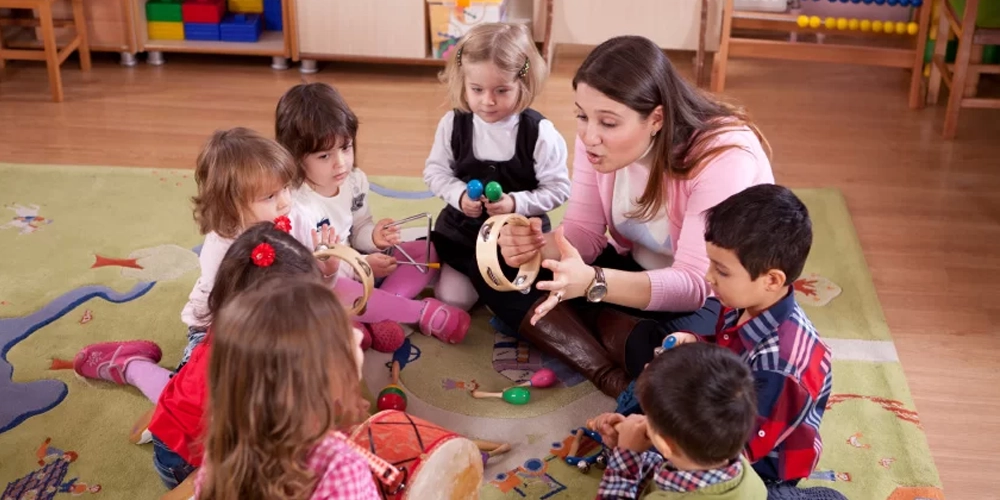
Montessori Elementary Curriculum (6-12 Years)
Elementary students engage in an environment that encourages collaboration, critical thinking, and a deeper understanding of the world. The Montessori elementary curriculum integrates cultural and academic subjects to promote holistic growth.
Integration of Academic Subjects with Cultural and Cosmic Education
- Subjects like geography, science, and history introduce students to the interconnectedness of life, an essential concept in the Montessori cosmic curriculum.
- For example, the Timeline of Life and Great Lessons help children visualize historical events and scientific discoveries.
Encouraging Collaborative Work and Problem-Solving Skills
- Group projects such as building models of ecosystems or conducting science experiments teach teamwork and analytical thinking.
- Tools like fraction inputs and geometric solids, which are part of the Montessori mathematics curriculum, introduce advanced math concepts hands-on.
| Focus Area | Example Activity | Skill Developed |
|---|---|---|
| History | Creating historical timelines | Contextual understanding and analysis |
| Science | Experimenting with basic physics principles | Observation and critical thinking |
| Geography | Studying maps and physical features | Spatial reasoning and global awareness |
The Montessori elementary curriculum provides children with a strong foundation in academics and cultural awareness, equipping them with skills for the next phase of their education.
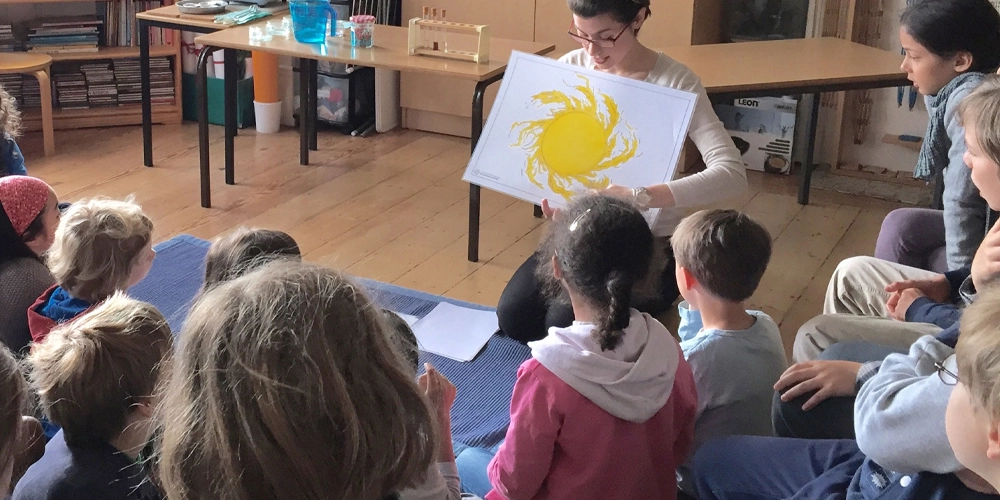
Montessori Middle and High School Curriculum (12-18 Years)
For adolescents, the focus shifts toward preparing for adult responsibilities and fostering intellectual independence. The Montessori middle school curriculum and Montessori high school curriculum encourage students to connect classroom learning with real-world applications.
Practical Skills, Community Service, and Project-Based Learning
- Internships, volunteering, and managing small projects teach leadership and social responsibility.
- Practical life lessons, such as budgeting, cooking, and career planning, are integrated into the Montessori curriculum philosophy.
Preparing Adolescents for Adult Responsibilities and Independence
- Students undertake long-term projects, such as researching sustainability practices or writing comprehensive reports.
- Advanced academic studies, including algebra, literature, and environmental science, prepare them for college and career success.
| Learning Area | Example Activity | Skill Developed |
|---|---|---|
| Community Service | Organizing local charity drives | Leadership and empathy |
| Research Projects | Writing papers on environmental issues | Critical thinking and public speaking |
| Advanced Math | Solving complex algebraic equations | Analytical and problem-solving skills |
This stage of the Montessori curriculum ensures students leave school with the confidence and skills needed to thrive in adulthood.

Parental Involvement in the Montessori Curriculum
Parents play a critical role in supporting the Montessori curriculum at home. Their involvement extends the principles of Montessori education beyond the classroom, fostering a consistent and enriching learning experience for children.
Extending Montessori Principles to the Home Environment
Bringing Montessori principles into the home encourages children to apply what they learn in school to their daily lives. Parents can create a seamless transition between home and school learning environments by incorporating elements of the Montessori at-home curriculum.
Key Practices for Integrating Montessori at Home:
- Child-Sized Furniture and Tools: Small tables, chairs, and utensils allow children to perform tasks independently.
- Accessible Learning Materials: Low shelves with practical life tools, puzzles, and books help children choose activities freely, mirroring the Montessori preschool homeschool curriculum.
- Hands-On Activities: Incorporating practical tasks such as folding laundry, sweeping floors, or cooking supports motor skill development and self-discipline.
| Montessori Home Activity | Skill Developed |
|---|---|
| Preparing a Snack | Fine motor skills and independence |
| Watering Plants | Responsibility and care for the environment |
| Sorting Laundry | Categorization and practical life skills |
Tips for Setting Up a Montessori-Inspired Home Learning Space
Designing a Montessori-inspired home learning space can transform the way children approach education. Parents can apply the following tips:
- Keep the Environment Orderly: A clutter-free, organized space fosters focus and concentration, core elements of the Montessori curriculum philosophy.
- Rotate Materials Regularly: Switching out learning tools keeps children engaged and curious.
- Encourage Natural Light and Minimalist Design: A calming environment aligns with the Montessori curriculum scope and sequence, creating an optimal space for learning.
The Role of Parents as Partners in the Child’s Education Journey
Parents in Montessori households are viewed as partners in education. Collaboration between parents and educators ensures consistency in Montessori, homeschool, or school-based learning. By reinforcing core concepts at home, parents help children solidify skills learned in class.
Cross-Disciplinary Learning in the Montessori Curriculum
The interdisciplinary approach of the Montessori curriculum integrates subjects like art, music, environmental studies, and science into a cohesive learning experience. This helps children understand the interconnectedness of knowledge and the world around them.
Integration of Art, Music, and Cultural Education into Daily Lessons
Art and music are fundamental components of the Montessori cultural curriculum. Lessons often combine creative expression with academic subjects:
- Art Projects: Painting or sculpting activities tied to geography lessons (e.g., creating models of continents).
- Music Activities: Introducing rhythm and melody alongside math lessons, such as counting beats or learning fractions through musical notes.
These cross-disciplinary activities stimulate creativity and critical thinking while reinforcing academic concepts from the Montessori math curriculum and beyond.
Teaching Sustainability and Environmental Stewardship
Montessori education emphasizes respect for the environment. Lessons in sustainability, part of the Montessori peace education curriculum, encourage children to care for the Earth through:
- Composting organic waste to understand resource cycles.
- Planting gardens to learn about botany and ecosystems is a key aspect of the Montessori botany curriculum.
These practices instill a sense of responsibility and promote eco-consciousness from an early age.
How Cosmic Education Fosters a Sense of Interconnectedness
Cosmic education is a central element of the Montessori curriculum, particularly in the elementary years. This concept introduces children to the interconnectedness of all life forms and the universe. Topics include:
- The Earth’s origins and life’s development are taught through the Timeline of Life.
- Exploring cultural diversity and global unity through geography and history lessons.
These lessons cultivate a sense of wonder and help students appreciate their role within a more extensive system.
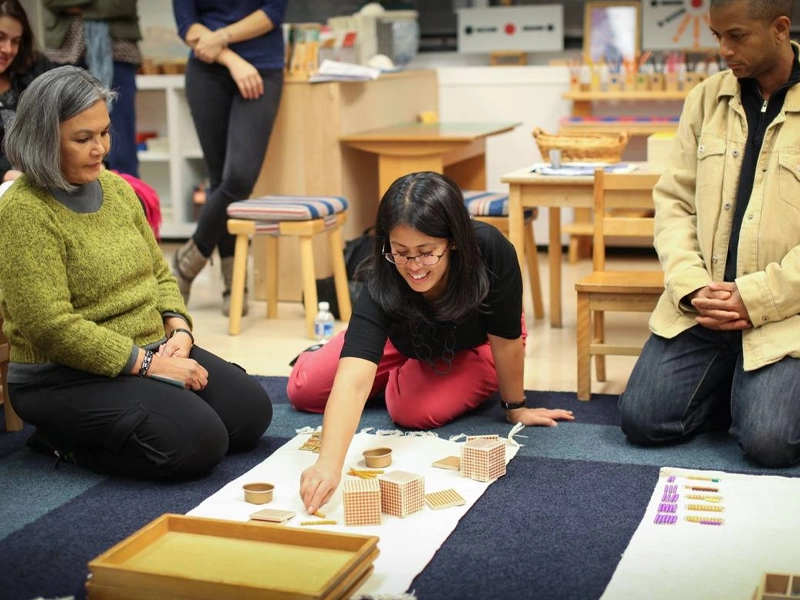

Incorporating Montessori Curriculum into Special Education
The adaptability of the Montessori curriculum makes it highly effective for children with special needs. Its hands-on approach, individualized pacing, and supportive environment ensure every child can thrive.
Adapting the Montessori Curriculum for Children with Special Needs
The flexibility of Montessori teaching methods allows educators to modify the curriculum for children with varying abilities, including those with ADHD, autism, or physical disabilities. For example:
- Simplified tasks from the Montessori practical life curriculum build confidence and teach life skills.
- Sensory materials from the Montessori sensorial curriculum help children process and respond to sensory stimuli.
Benefits for Children with ADHD, Autism, and Other Learning Challenges
Research shows that the structured yet flexible nature of the Montessori curriculum method can benefit children with diverse learning needs. Key advantages include:
- Reduced Anxiety: The calming environment of Montessori classrooms helps children feel secure and focused.
- Encouragement of Self-Paced Learning: Children can revisit materials at their own pace, ensuring mastery without pressure.
- Fostering Independence: Tools like the Pink Tower and Moveable Alphabet encourage problem-solving and autonomy.
Examples of Inclusive Practices in Montessori Environments
Inclusive practices are integral to the Montessori curriculum philosophy. Teachers facilitate mixed-age group learning, enabling children with special needs to learn alongside peers in a supportive environment. Examples include:
- Integrating sensory breaks for children with autism.
- Encouraging collaborative tasks, such as group art projects, to promote social skills.
| Practice | Outcome for Children |
|---|---|
| Using Self-Correcting Materials | Builds confidence and reduces frustration |
| Group Activities | Encourages peer interaction and teamwork |
| Sensory Exploration | Helps children process sensory inputs effectively |
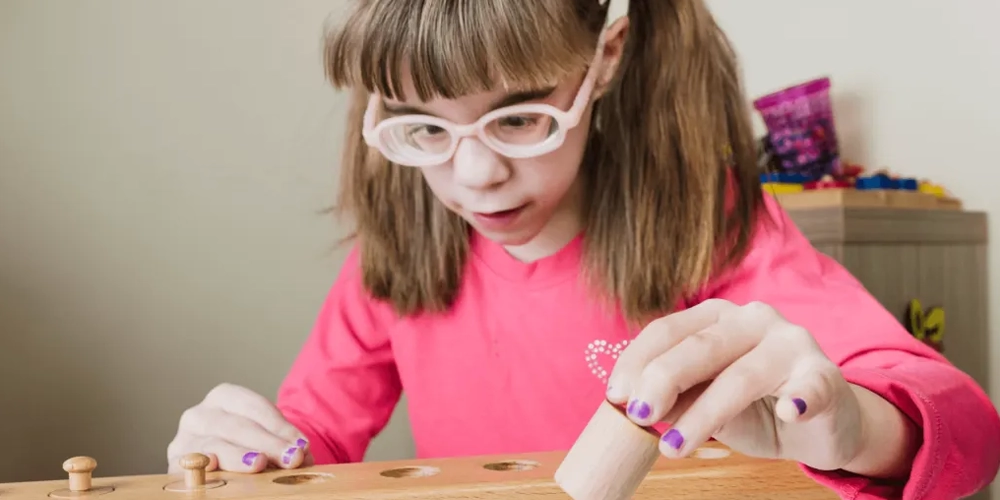
Advantages and Limitations of the Montessori Curriculum
Montessori education offers numerous advantages but has its challenges. Understanding these aspects helps parents and educators make informed decisions about its suitability.
Advantages: Individualized Pace, Hands-On Learning, and Critical Thinking
Montessori classrooms prioritize individualized learning, which allows children to progress at their speed. The hands-on approach and focus on critical thinking make the method highly effective for long-term development.
Key Advantages:
- Self-Paced Learning: Each child engages in activities aligned with their developmental stage, from the Montessori toddler curriculum to the advanced Montessori high school curriculum.
- Tactile Tools: Materials like the Pink Tower and Fraction Insets bring abstract concepts to life.
- Holistic Growth: Lessons in the Montessori cultural curriculum integrate subjects like geography, history, and art, nurturing well-rounded learners.
Limitations: Cost, Accessibility, and Misconceptions About Its Structure
While the Montessori method is praised for its effectiveness, it has limitations.
- High Costs: Tuition fees for Montessori schools and the expense of purchasing specialized Montessori curriculum materials can be prohibitive.
- Limited Availability: Not all regions have accredited Montessori programs or teachers trained in the AMI Montessori curriculum.
- Misunderstandings: Some assume Montessori classrooms need to be more structured, overlooking the carefully prepared environments central to the method.
How Montessori Educators Address and Overcome These Challenges
Educators and organizations work to address these challenges by:
- Offering scholarships to improve accessibility.
- Training teachers to ensure consistency across Montessori schools curriculum globally.
- Educating parents on the structured yet flexible approach of the Montessori curriculum philosophy.
Montessori Curriculum and Teacher Preparation
Effective implementation of the Montessori method depends on well-trained educators who understand its philosophy and materials.
Requirements for Montessori Teacher Certification (e.g., AMI)
Montessori teachers undergo rigorous training to earn credentials, such as those provided by the Association Montessori Internationale (AMI). The certification covers:
- Mastery of Montessori curriculum materials like Sandpaper Letters and Number Rods.
- Observation techniques to assess and guide children’s progress.
- Curriculum planning for age groups, such as the Montessori preschool curriculum and the Montessori elementary curriculum.
The Role of Teachers as Guides and Observers
Montessori educators act as facilitators rather than traditional instructtors. They carefully observe each child to provide individualized support.
| Teacher’s Role | Example |
|---|---|
| Guide | Introducing new materials based on readiness |
| Observer | Monitoring a child’s interaction with activities |
| Encourager | Providing subtle encouragement to foster confidence |
Creating a Prepared Environment to Align with Montessori Principles
The classroom environment reflects the core values of the Montessori philosophy. Teachers prepare spaces with materials organized by subject, such as practical life, sensorial, and language areas, ensuring children can work independently and efficiently.

Real-World Applications of the Montessori Curriculum
Montessori education prepares students for lifelong success by instilling independence, critical thinking, and adaptability.
Success Stories of Montessori Graduates in Various Fields
Many notable individuals, including innovators, artists, and scientists, credit their success to a Montessori education. For example:
- Jeff Bezos, founder of Amazon, has spoken about how the Montessori method fostered his creativity and problem-solving abilities.
How the Curriculum Prepares Students for Lifelong Learning and Adaptability
The interdisciplinary approach of the Montessori method equips students with skills to excel in academic and professional settings.
- Critical Thinking: Tools like the Geometric Solids help children analyze complex problems.
- Collaboration: Group activities teach teamwork, a skill valued in modern workplaces.
Case Studies of Montessori Schools Implementing the Curriculum Globally
Montessori programs are successful in diverse contexts, from urban schools in the United States to rural programs in India. These case studies highlight the adaptability and impact of the Montessori curriculum across cultures.
Montessori Curriculum and Technology Integration
While traditional Montessori education emphasizes hands-on, tactile learning, the modern world calls for thoughtful technology integration. In Montessori classrooms, technology is introduced to enhance—not replace—physical materials, fostering a balanced learning experience.
Balancing Hands-On Activities with the Use of Digital Tools
Finding harmony between digital tools and tactile activities is essential. In a Montessori environment, digital technology is carefully chosen to complement the core principles of experiential learning.
- Interactive Learning Applications: Apps designed for phonics, such as those used in the Montessori phonics curriculum, can help reinforce letter-sound relationships while preserving the tactile experience of tracing Sandpaper Letters.
- Virtual Science Labs: Virtual experiments allow students in the Montessori elementary curriculum and beyond to explore concepts like gravity and electricity safely.
| Traditional Activity | Digital Tool Integration |
|---|---|
| Tracing Sandpaper Letters | Phonics apps to reinforce sounds |
| Exploring Geography with Maps | Virtual globe tools to enhance spatial understanding |
| Hands-On Science Projects | Virtual labs to test hypotheses and extend knowledge |
Examples of Technology That Complement Montessori Principles
In the Montessori education curriculum context, technology is most effective when it aligns with the philosophy of fostering independence and curiosity. Examples include:
- Coding Platforms: Platforms like Scratch teach computational thinking while encouraging creativity.
- Digital Timelines: In the Montessori cultural curriculum, digital timelines visualize historical events alongside physical maps.
- Music Creation Tools: Apps that allow children to compose and play music complement the Montessori music curriculum by fostering an appreciation for rhythm and melody.
Challenges and Opportunities for Integrating Tech into Montessori Settings
Challenges:
- The overuse of screens could detract from hands-on experiences central to the Montessori curriculum materials.
- Ensuring that tech tools align with Montessori values, such as independence and creativity, can be difficult.
Opportunities:
- Technology can provide global access to resources like digital books aligned with the Montessori reading curriculum.
- Tools like language-learning apps can support bilingual or multilingual environments, expanding on the traditional Montessori language curriculum.
Montessori school students for the digital world by balancing tradition with innovation without compromising core educational principles.
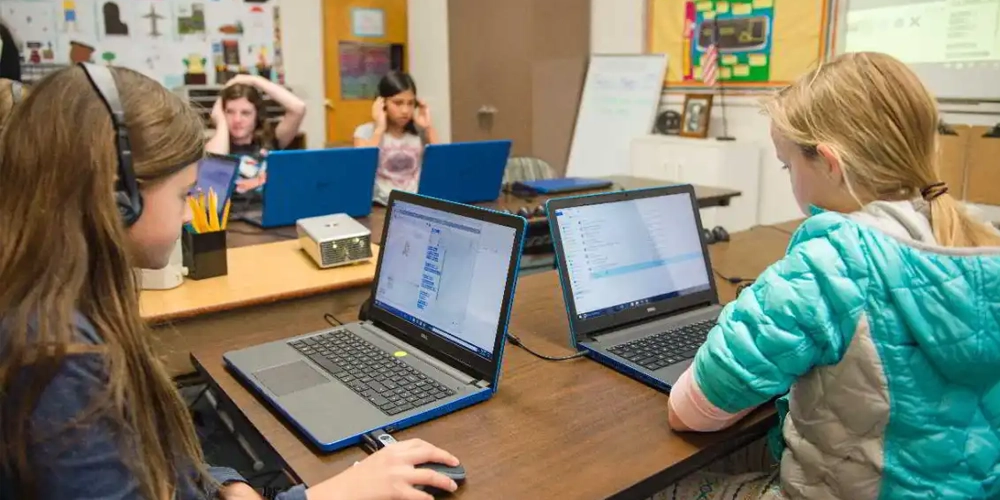
Montessori Curriculum and Life Skills Development
Teaching life skills is one of the defining features of the Montessori curriculum. Practical life activities are integrated into every stage, helping children develop independence, responsibility, and problem-solving abilities.
Teaching Practical Life Skills Like Cooking, Cleaning, and Time Management
Practical life activities, a cornerstone of the Montessori practical life curriculum, teach children essential skills that prepare them for daily life. Examples include:
- Cooking: Tasks like slicing fruit or measuring ingredients improve motor skills and introduce basic math concepts.
- Cleaning: Activities such as sweeping or dusting foster a sense of responsibility and care for the environment.
- Time Management: Older students in the Montessori high school curriculum learn to plan their schedules, balancing academic and personal tasks.
| Activity | Skill Developed |
|---|---|
| Preparing a Snack | Fine motor skills, independence, and basic math |
| Washing Dishes | Responsibility and hand-eye coordination |
| Planning a Study Schedule | Organization and time management |
Grace and Courtesy Lessons as Part of Social Skill Development
Montessori education emphasizes grace and courtesy to teach children respect, empathy, and social etiquette. These lessons, often part of the Montessori preschool curriculum, include:
- Greeting peers politely.
- Taking turns during group activities.
- Practicing table manners during snack time.
Conflict Resolution and Emotional Intelligence in the Curriculum
Building emotional intelligence is another key component of the Montessori approach. Through role-playing and guided discussions, children learn to express their feelings, listen to others, and resolve conflicts peacefully. These practices align with the values of the Montessori peace education curriculum, fostering harmonious interactions.
Montessori Curriculum for Global Citizenship
The Montessori curriculum prepares children to be responsible global citizens by emphasizing cultural understanding, environmental stewardship, and empathy.
Promoting Cultural Awareness and Appreciation
Montessori cultural curriculum teaches children about different cultures, traditions, and histories. Activities include:
- Exploring maps to learn about continents, countries, and landmarks.
- Studying traditional music and art from various regions is often integrated into the Montessori art curriculum and Montessori music curriculum.
Encouraging Empathy and Collaboration Through Global Studies
Collaborative projects in Montessori classrooms teach children to work together while appreciating diverse perspectives. For example:
- Group activities, such as building models of ecosystems, promote teamwork.
- Research projects on global challenges like climate change encourage critical thinking and empathy.
Preparing Students to Address Global Challenges with Confidence
Montessori education equips students with the skills needed to tackle real-world problems. Students develop confidence and leadership skills by participating in initiatives such as community service or sustainability projects.
Global Variations of the Montessori Curriculum
The Montessori curriculum has been successfully adapted across diverse cultural and regional contexts. While the core principles remain the same, variations are made to meet the unique needs of local communities.
How the Montessori Curriculum Is Adapted to Different Cultures and Regions
Montessori schools incorporate local traditions and languages into their programs in different parts of the world. For instance:
- The Montessori elementary curriculum in Japan integrates lessons on respect and mindfulness, reflecting cultural values.
- In Africa, Montessori programs emphasize practical activities tailored to rural lifestyles like farming.
Maintaining Consistency in Core Principles While Addressing Local Needs
Despite regional variations, Montessori schools adhere to key principles such as hands-on learning, mixed-age classrooms, and child-centered education. Accredited programs ensure that these standards are met globally.
Unique Approaches in Montessori Schools Across the World
Some Montessori schools have developed innovative methods while staying true to Montessori principles:
- In India, cosmic education is enriched with lessons on astronomy and mythology.
- In Scandinavia, the focus on outdoor learning integrates seamlessly with the Montessori curriculum philosophy, encouraging children to connect with nature.
| Region | Unique Montessori Approach |
|---|---|
| Japan | Focus on mindfulness and respect for others |
| Africa | Emphasis on farming and practical life skills |
| Scandinavia | Outdoor learning and environmental education |
Conclusion
The Montessori curriculum is a testament to the power of individualized, child-centered education. By fostering independence, curiosity, and a love of learning, it prepares children not just for academic success but for life. Across its carefully designed stages—from the Montessori toddler curriculum to the Montessori high school curriculum—this approach emphasizes hands-on learning, practical life skills, and emotional intelligence, creating well-rounded, confident individuals.
With its adaptability, the Montessori curriculum method has proven effective in diverse settings, including traditional classrooms, Montessori homeschool curriculum, and special education environments. By integrating art, music, sustainability, and even technology, it meets the demands of the modern world while staying true to its core principles.
As we look to the future, the Montessori curriculum’s global variations and innovative adaptations highlight its enduring relevance. Whether nurturing empathy through the Montessori peace education curriculum, fostering global awareness through the Montessori cultural curriculum, or preparing students for real-world challenges, Montessori education equips children with the skills they need to thrive in a rapidly changing world.
For parents and educators considering this method, the Montessori curriculum philosophy offers not just an academic framework but a way of life—one that respects the potential of every child and nurtures a lifelong journey of growth, discovery, and success.
